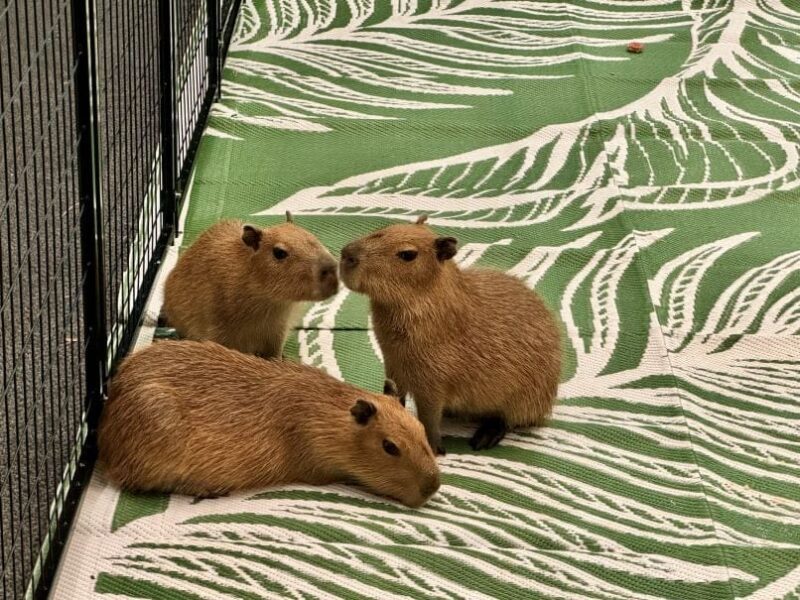Ever wondered if capybaras—the adorable, giant, water-loving rodents—are related to those cute little guinea pigs in pet stores? You’re not alone. It’s a question I’ve seen pop up often, especially for animal lovers and trivia buffs. Let’s dive in and clear it up in plain English, without all the technical mumbo jumbo.
Spoiler: Yes, they’re related, but there’s more to the story.
What’s the Deal With Capybaras and Guinea Pigs?
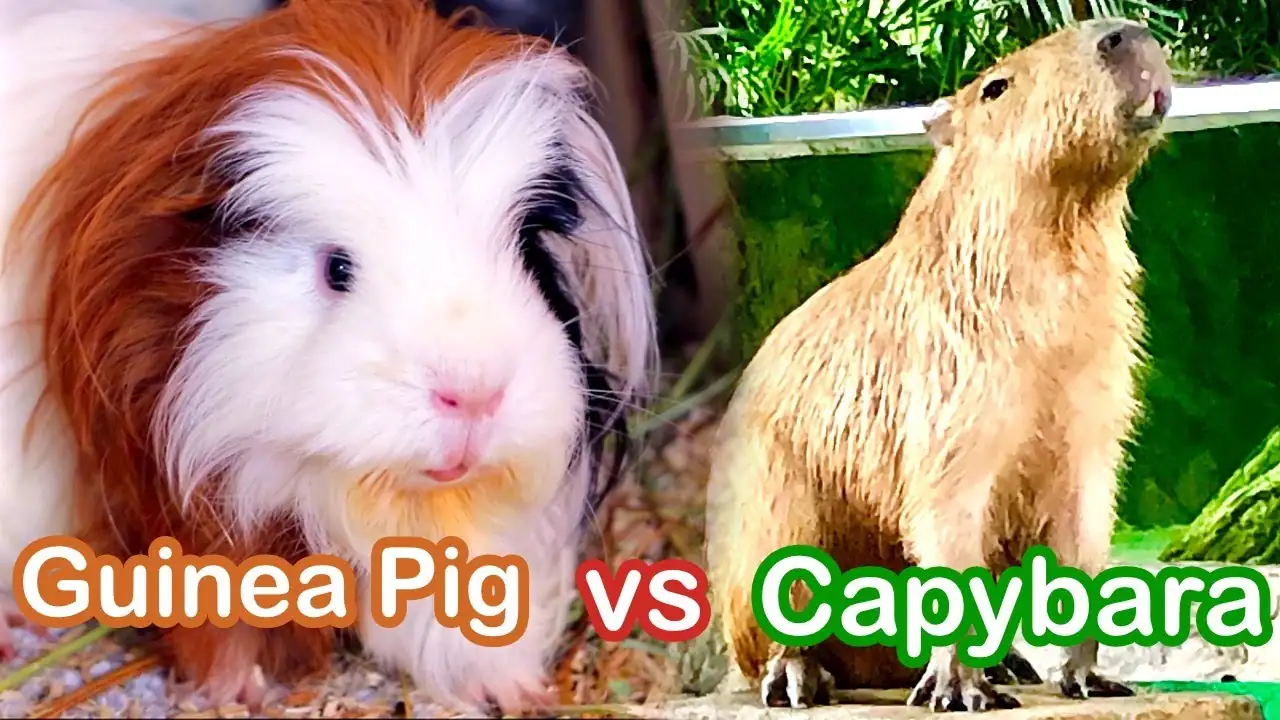
Before we dive into the nitty-gritty, here’s the short answer: Capybaras and guinea pigs belong to the same family, Caviidae, but they’re not as closely related as siblings. Think of them more like distant cousins who see each other at big family reunions.
Both rodents are native to South America, and they share similar traits, but they’ve taken very different paths in life—kind of like how one cousin becomes a globe-trotting entrepreneur while the other sticks to small-town roots.
Taxonomy: The Family Tree Connection
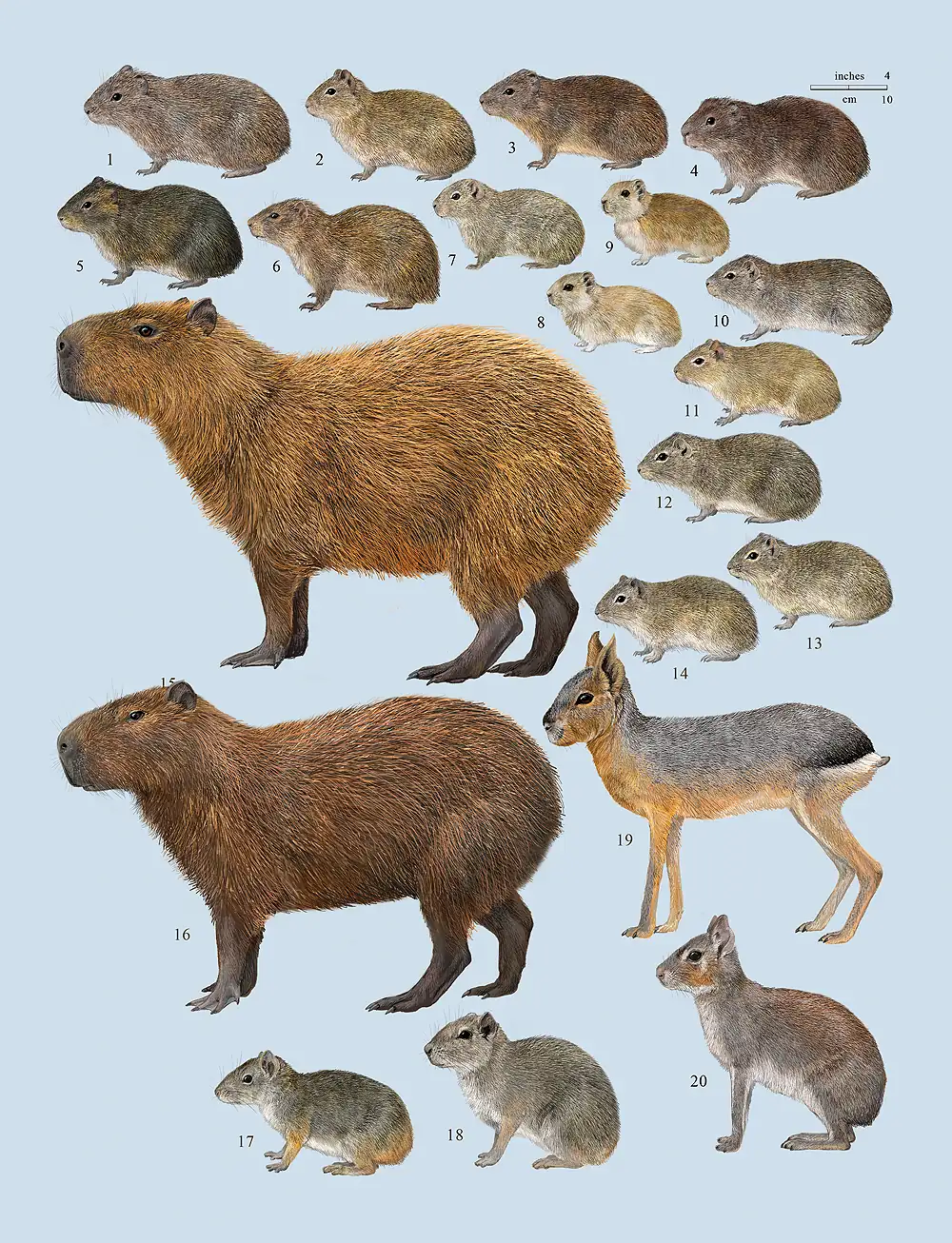
Let’s look at where these two animals fit in the rodent family tree:
- Order: Rodentia (the largest mammal order—yep, lots of relatives here)
- Family: Caviidae (a smaller group that includes guinea pigs, capybaras, and wild cavies)
But here’s where they branch off:
- Guinea Pigs: These little guys fall under the subfamily Caviinae and are officially called Cavia porcellus.
- Capybaras: The big chill water-lovers belong to Hydrochoerinae, with the scientific name Hydrochoerus hydrochaeris.
How Are Capybaras and Guinea Pigs Similar?
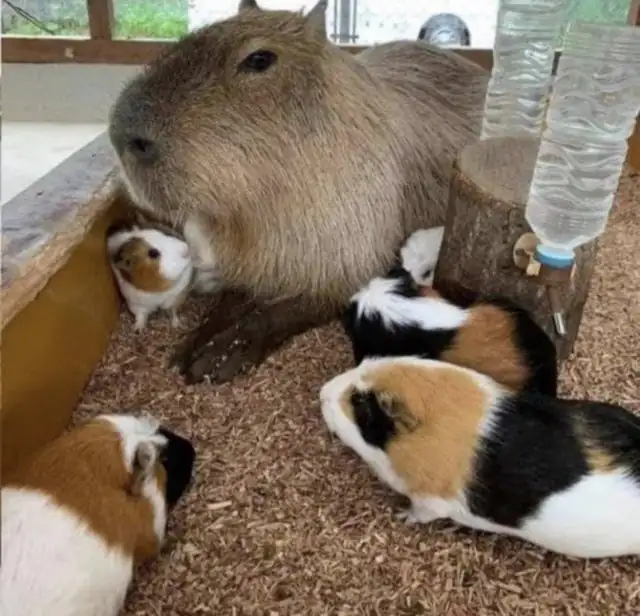
Despite their size difference (more on that soon), these two share some striking similarities that scream “family ties.”
1. Physical Features
- Robust Bodies: Both have that stocky build, short legs, and no visible tails.
- Coarse Fur: Their fur isn’t silky soft—it’s designed for function, not fashion.
2. Herbivores Through and Through
Neither capybaras nor guinea pigs are picky eaters when it comes to plant-based snacks. They munch on grasses, veggies, and plants, with capybaras throwing in aquatic plants for good measure.
3. Social Creatures
Both animals thrive in groups. While guinea pigs chill in small groups or pairs, capybaras hang out in larger herds, sometimes with over 20 members.
How Are They Different?
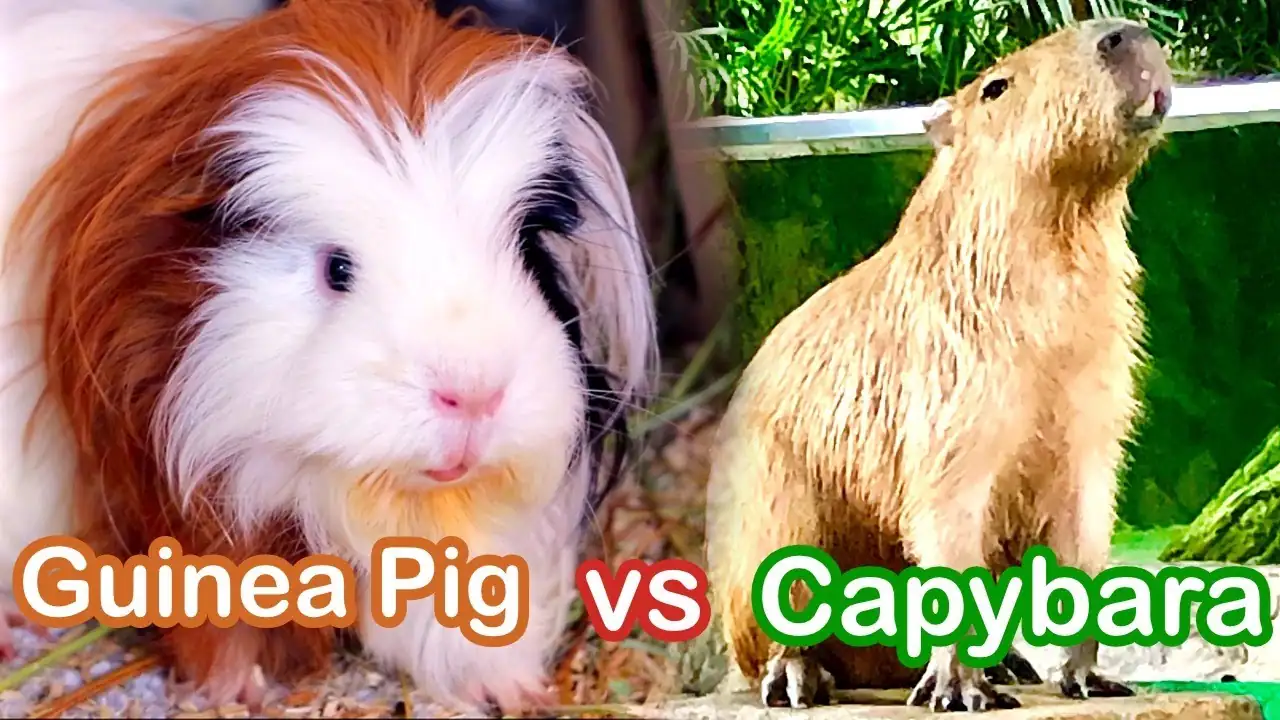
Here’s where the family resemblance fades:
1. Size Matters
- Guinea Pigs: Tiny bundles of fluff, weighing about 2 pounds on a good day.
- Capybaras: Absolute units—these are the world’s largest rodents, weighing up to 150 pounds.
2. Water vs. Land
- Capybaras: They’re semi-aquatic, meaning they love lounging in water, whether it’s a river, lake, or backyard pool.
- Guinea Pigs: They’re strictly land animals, happiest in cozy enclosures or grassy fields.
3. Lifespan
- Guinea Pigs: 4–8 years.
- Capybaras: A little longer—up to 10 years in the wild, 12 in captivity.
Evolution: The Long-Lost Ancestor
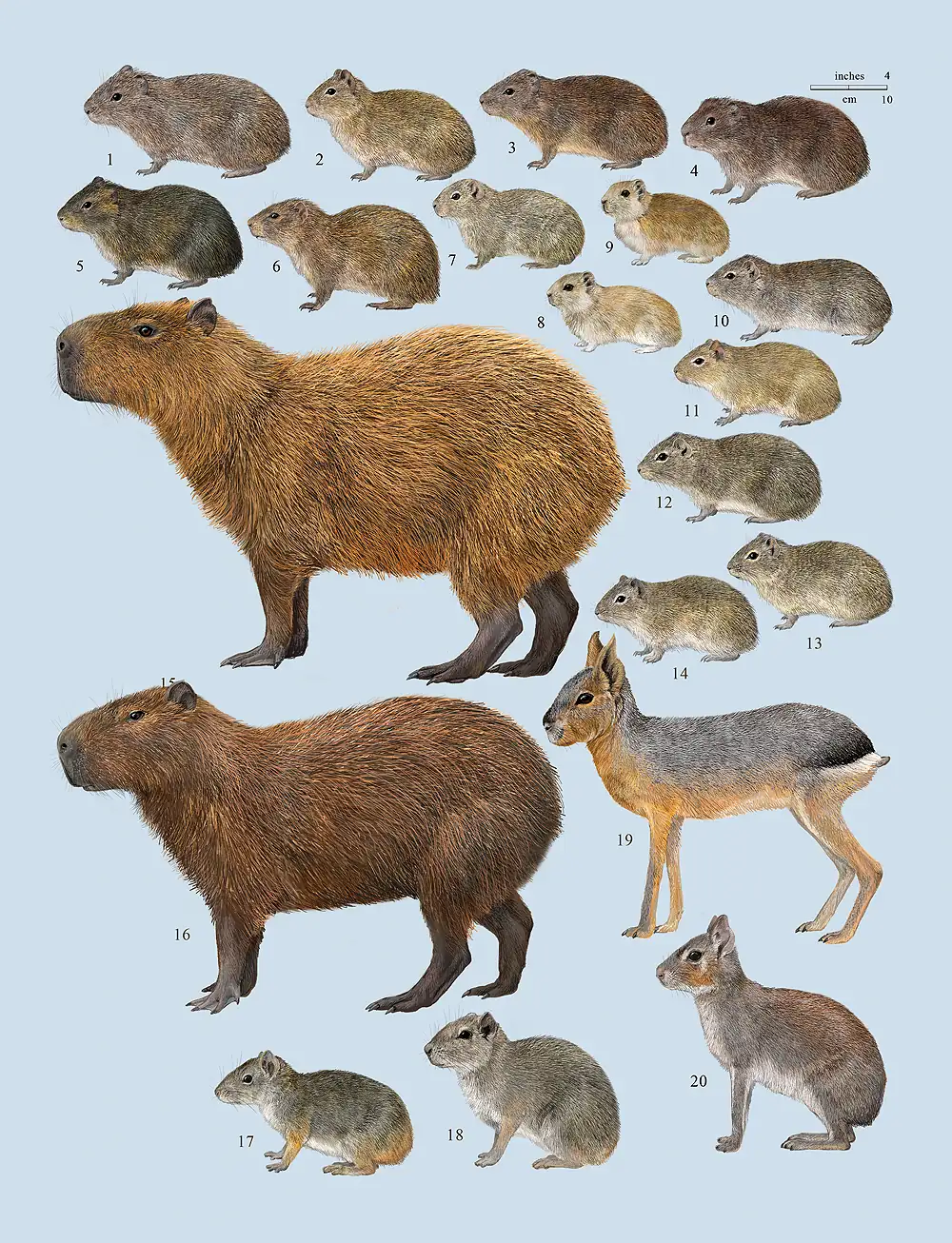
Capybaras and guinea pigs split from their last common ancestor millions of years ago. Scientists think it happened during the Miocene epoch (fancy talk for about 20–22 million years back). Since then, they’ve adapted to totally different lifestyles, but their shared roots still show.
Think of it like this: Capybaras are the adventurous, water-loving explorers of the family, while guinea pigs are the homebodies who thrive in comfort.
Why Do People Get Them Confused?
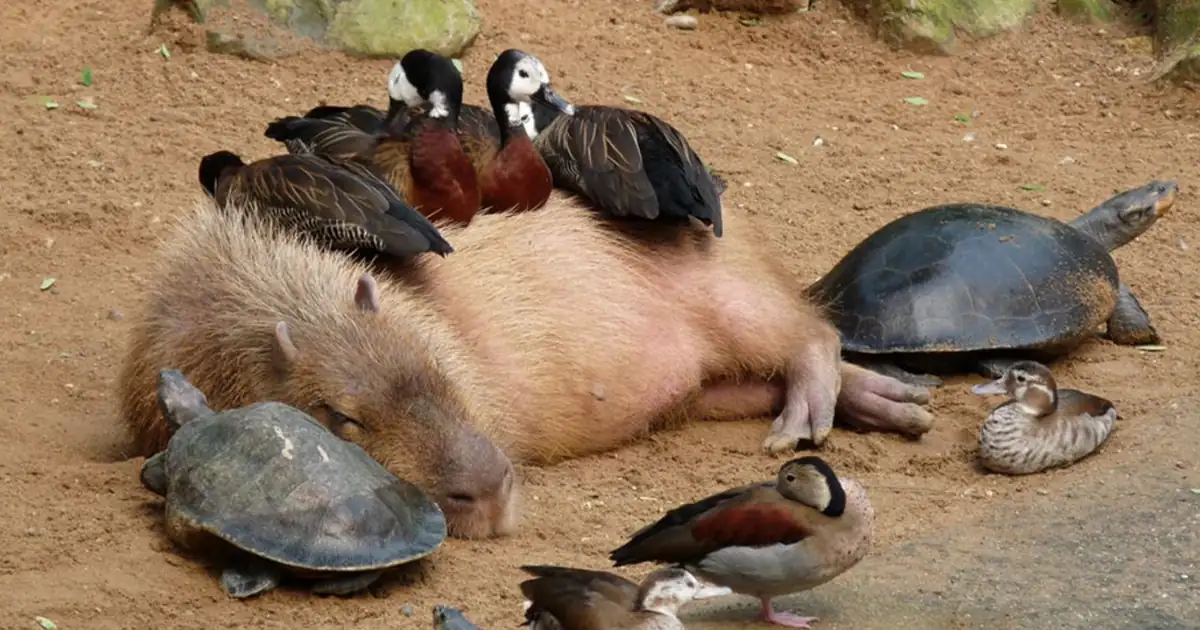
Honestly, it’s easy to see why people think capybaras and guinea pigs might be closer relatives:
- Cuteness Overload: Both are irresistibly adorable.
- Similar Faces: Those round faces, big eyes, and twitchy noses look pretty familiar.
- Shared Origins: Both come from South America, so they’ve evolved in similar ecosystems.
FAQs About Capybaras and Guinea Pigs
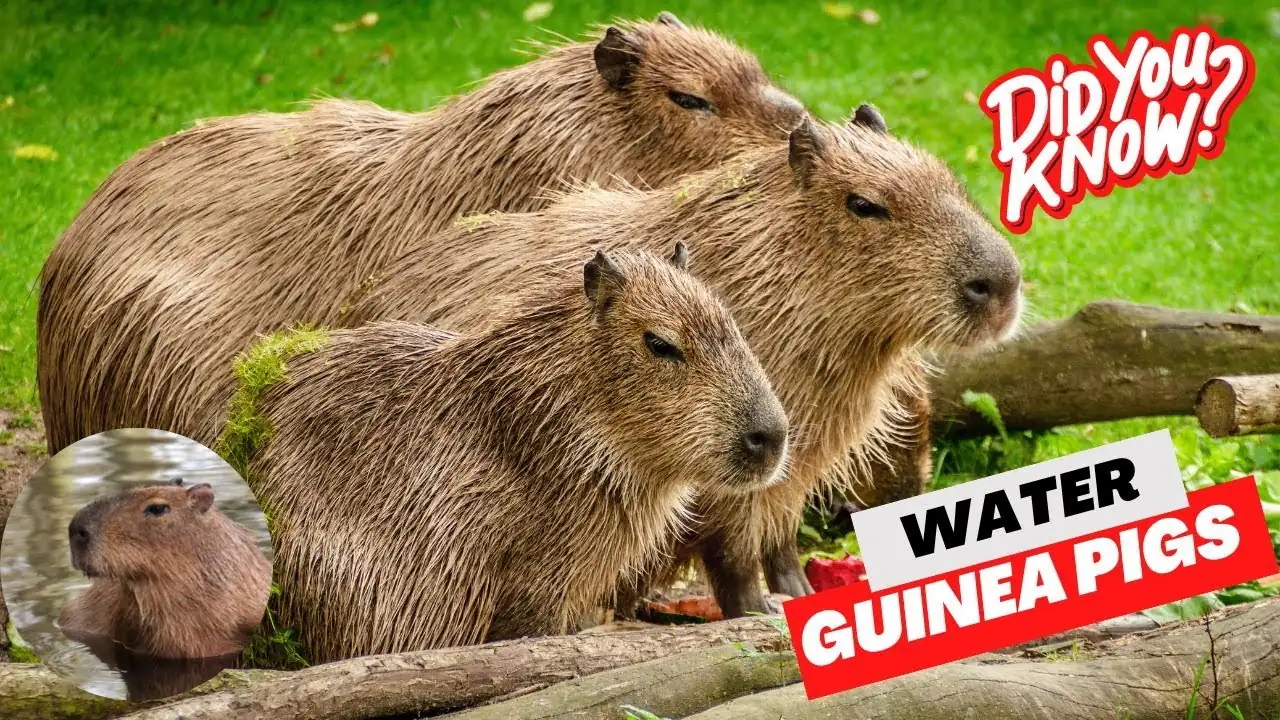
1. Are guinea pigs baby capybaras?
Nope! Guinea pigs are a completely separate species. Capybara babies are called pups, but they’re much larger at birth than adult guinea pigs.
2. Can you keep a capybara and a guinea pig together?
Probably not a great idea. Capybaras need water and space, while guinea pigs are more comfortable in dry, smaller enclosures.
3. What do they eat?
Both love plants, but guinea pigs need daily vitamin C, while capybaras get nutrients from a mix of land and aquatic plants.
4. Are capybaras and guinea pigs domesticated?
Guinea pigs are fully domesticated, while capybaras are wild animals (though they’re surprisingly chill with humans).
Why It Matters
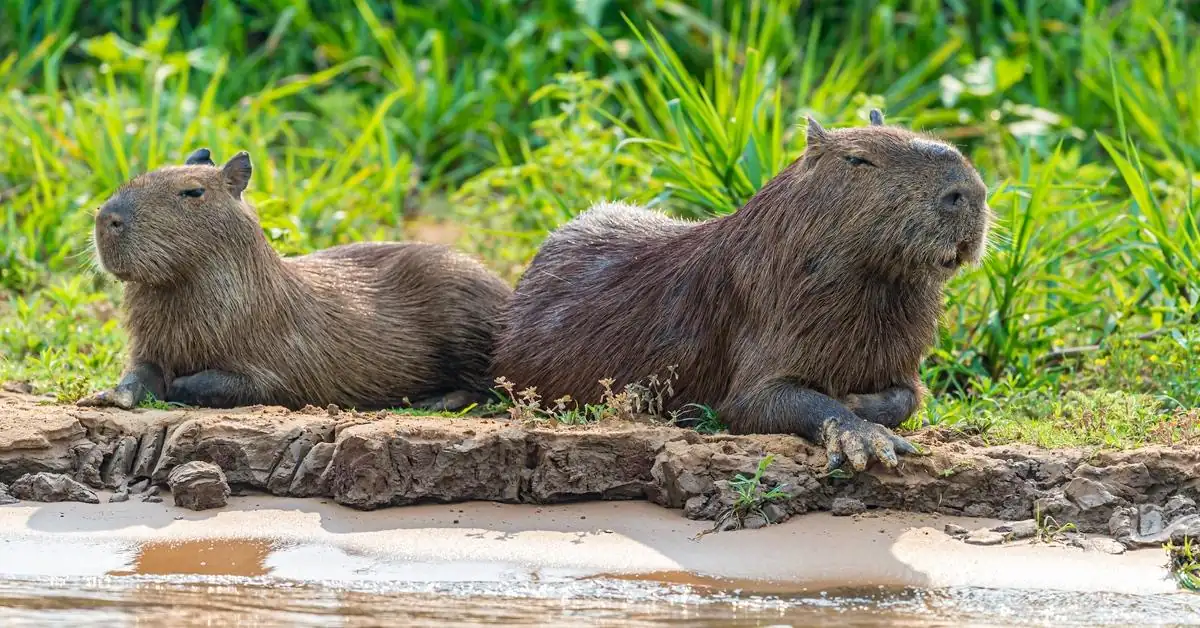
Understanding the link between capybaras and guinea pigs is about more than trivia—it’s a reminder of how animals adapt to their environments in fascinating ways. It’s also a great conversation starter for your next backyard BBQ or trivia night.
So, are capybaras related to guinea pigs? Absolutely. But they’ve each carved out their own unique spot in the animal kingdom.
Next time you see a capybara chilling in the water or a guinea pig snuggling in its cozy enclosure, you’ll know the story behind their connection. Who knew distant cousins could be so different yet so alike?
Fun fact to share with your friends: Capybaras are nicknamed “nature’s ottomans” because other animals often sit on them!

